The last stretch of the Via Francigena in Tuscia, the pilgrim route that starts from Canterbury in England, has its own special charm and crosses one of the most beautiful areas of central Italy where nature and culture blend in a magical way.
In the evening you enter wonderful villages and you do not know where to look for the artistic beauty of the places, while during the day the countryside and the woods enchant with their natural beauty. Proceno, Acquapendente, San Lorenzo Nuovo, Bolsena, Montefiascone, Viterbo, Vetralla, Capranica, Sutri and Monterosi.
But perhaps the real magic is in the stories of the people who meet in the villages and tell the particularities of each place with legends and episodes that recall an extraordinary past. Often the stories are from ancient millennia.
120 Kilometers of Surprises
Proceno
You enter the Tuscia del Lazio through the northern village of Proceno, from whose castle three regions dominate. Do you know the first story and from where it starts? From the Etruscans, of course!
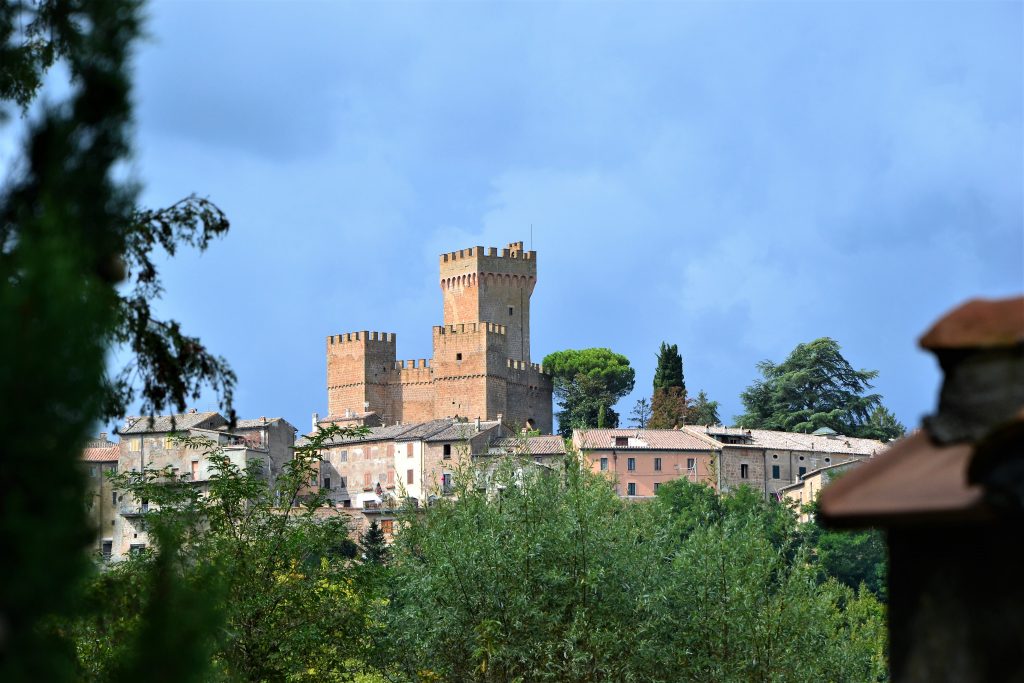
Proceno owes its name to the Etruscan king Porsenna who was wounded by a wild boar during a hunt so he decided to spend the night in a forest surrounded by rivers. Here, he founded this village which then spent its medieval history in the Papal States.
From Proceno you trek to Acquapendente, still an Etruscan village created between different watercourses and on two different hills. The Etruscans were actually great engineers and chose to set up their centres at the confluence of waterways.
Acquapendente
Acquapendente is known for its belligerent spirit that led it to oppose the emperor Federico Barbarossa and to destroy his castle. This spirit can still be found in the inhabitants who are always inclined to protect their autonomy from any external interference.
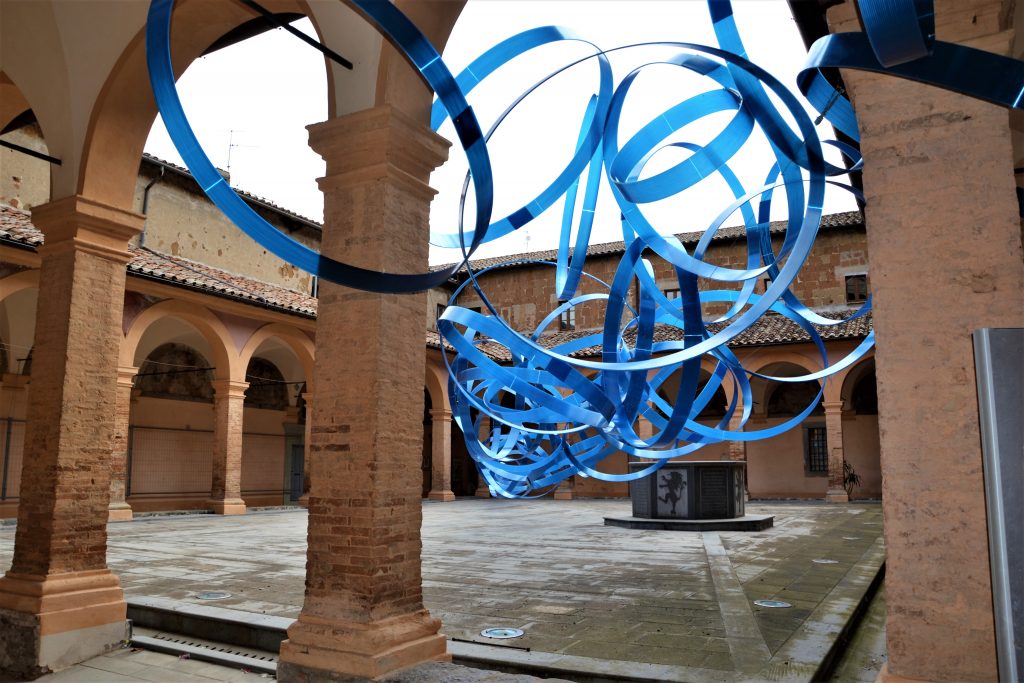
But perhaps Acquapendente is known throughout Italy for the Festa dei Pugnaloni that celebrates the Madonna del Fiore in May. The pugnaloni were cattle prods used during rounding up of stock and today they have become mosaics of flowers that they bring to the fair and sell in memory of a miracle. That was the fact that, after the flowering of a cherry stick, people rebelled against the governor of Frederick Barbarossa. The weekend of the fair attracts tourists from all over.
San Lorenzo Nuovo
There is an intermediate stage in San Lorenzo Nuovo from where you start to see the Bolsena lake. It is one of the few "foundation towns" wanted by Pope Clement XIV to protect the inhabitants of San Lorenzo alle Grotte from malaria.
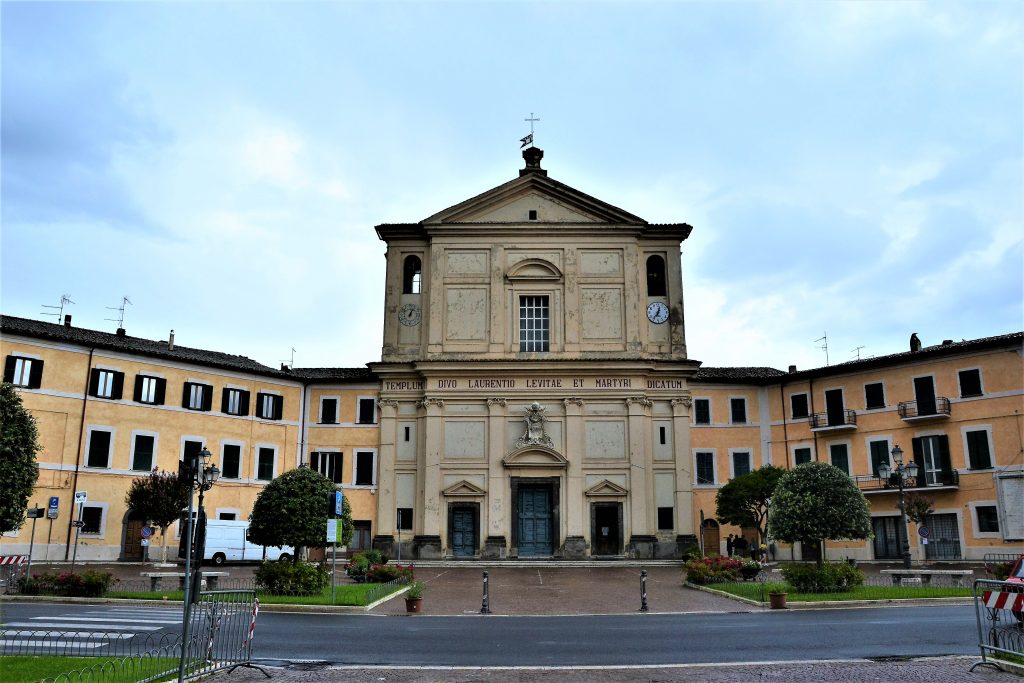
Bolsena
The journey continues arriving at the lake of Bolsena following the ancient path of the Via Cassia and the first stop on the shore is in Bolsena, the city famous for the Miracle of the Eucharist. The sanctuary of Santa Cristina is a destination for pilgrims since the day of the miracle and the flow of people seems never to end.
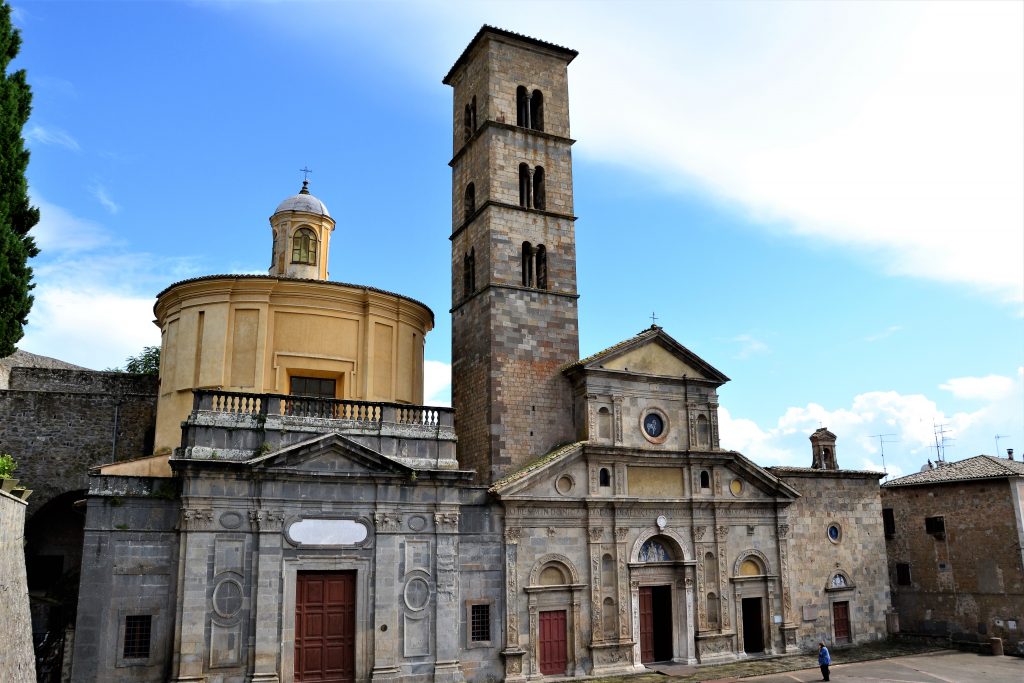
But Bolsena is a tourist resort between the beaches and regattas. The Via Francigena pilgrim should stop for a few days to savour all the pleasures offered by the city.
Do not miss the cooking of freshwater fish. They are a specialty that warrants the trip. Few people know that King George VI of England came to Bolsena because here an important battle was fought during World War II and there is a Commonwealth war cemetery.
Montefiascone
By reaching Montefiascone, we are 100 kilometers from the tomb of St. Peter!
There is a breathtaking view of the lake and 4 Italian regions: Lazio, Tuscany, Umbria and Marche. The Martana and Basentana islands are clearly visible from its belvedere. According to the Etruscans this last-mentioned island was one of the gates to the underworld and many Etruscans went there so as not to submit to the dominion of Rome that had conquered them.
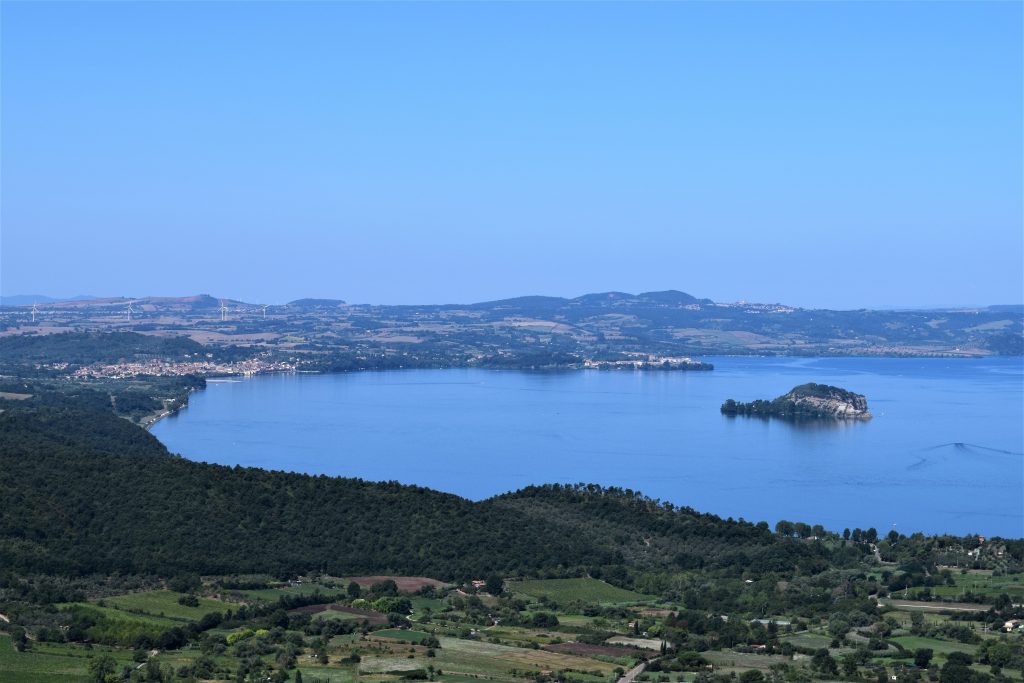
Montefiascone is recognised from afar for the magnificence of its dome. But another story covers the charm of this enchanting village. It is that of the bishop Johannes Defuk who sent his butler to select wines to drink during the journey from Germany to Rome for the coronation of Henry V.
The cup-bearer was to write the word 'est' on the inns where the best wine was served. And in Montefiascone he wrote 'Est! East!! East!!!'. It is no coincidence that Defuk was then buried in Montefiascone and left a legacy to continue the wine festivities.
In addition to DOC white wine, oil and traditional local dishes should not be missed.
Viterbo
What about Viterbo? Try to spend at least one weekend to enjoy all of its offers. A city that hosts a university is always lively and full of musical, cultural as well as entertainment events.
The totally medieval city is enclosed by large walls with 9 access doors each with a different charm.
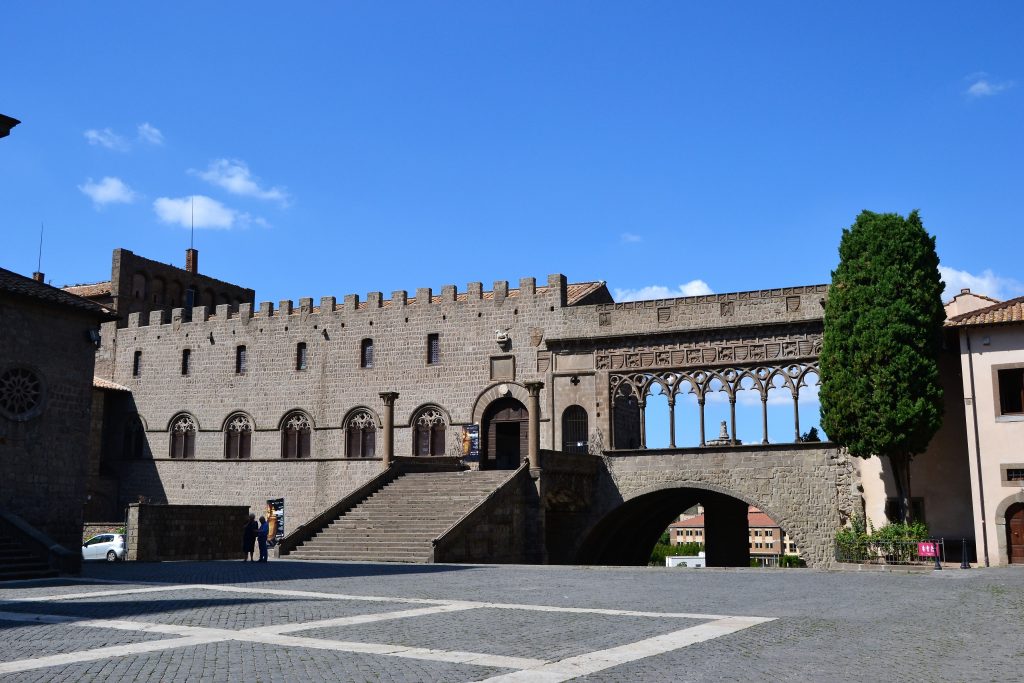
Above all, a city famous for the Carriage of Santa Rosa, a structure almost 30 meters high that is carried around the city on the occasion of the celebrations of the patron saint Santa Rosa. The carriage and event have become UNESCO intangible heritage.
If you do not have enough time, then come back!
Vetralla
Did you know that Vetralla is twinned with Venice? But how does a city founded by the Etruscans in the open country come to twin with a city founded on water by those who ran away from the Huns.
To unite the two cities are two very heartfelt ceremonies: the ‘Marriage of the Tree’ in Vetralla and the "Marriage of the Sea" in Venice.
The feast of Vetralla has very ancient origins dating back to the pagan rites of fertility in spring to propitiate a good harvest. But this ceremony began in this form in the Middle Ages during discord with Viterbo for the possession of the woods of Mount Fogliano granted to Vetralla by Innocent III in 1206.
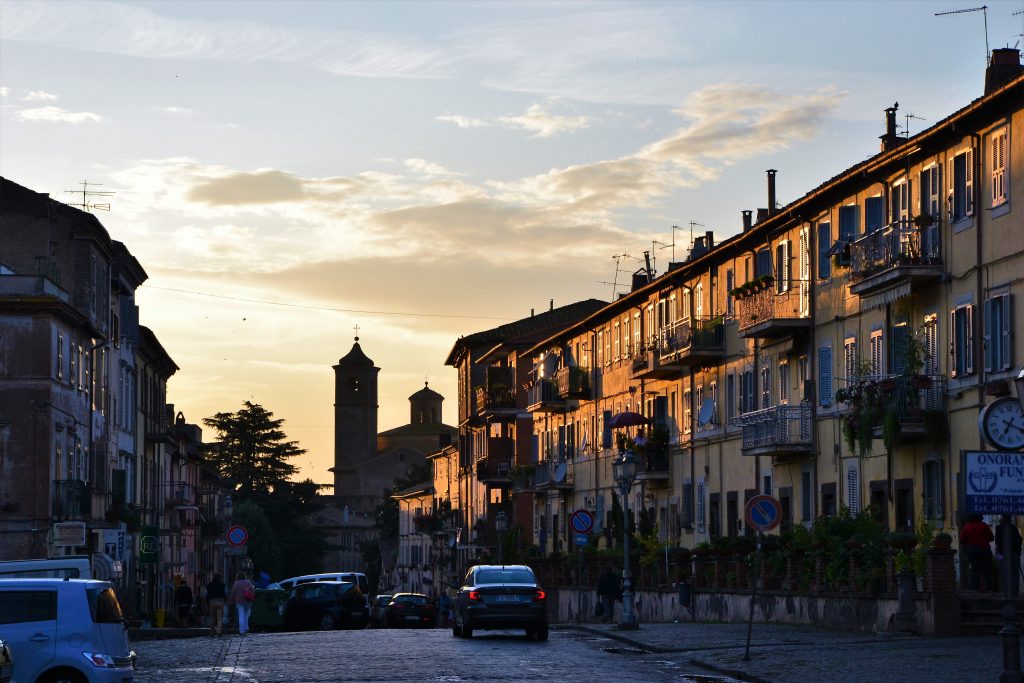
The festival reiterates the victory by Vetralla. On the morning of 8 May, a procession of costumed knights enters the forest amid the applause of the crowd in front of the Sant'Angelo hermitage. Here two trees, a Turkey oak and an oak tree, are decorated with flowers and joined by a white bridal veil. The mayor celebrates the wedding with the accompaniment of the band. After the ceremony and the blessing begins the wedding banquet.
Capranica
A true medieval village which is accessed through a special door with a clock that was once the entrance to the Anguillara castle. Medieval, Renaissance and nineteenth-century palaces reveal the charm that Capranica has exercised for centuries with a famous sanctuary designed by Vignola just outside the medieval village.
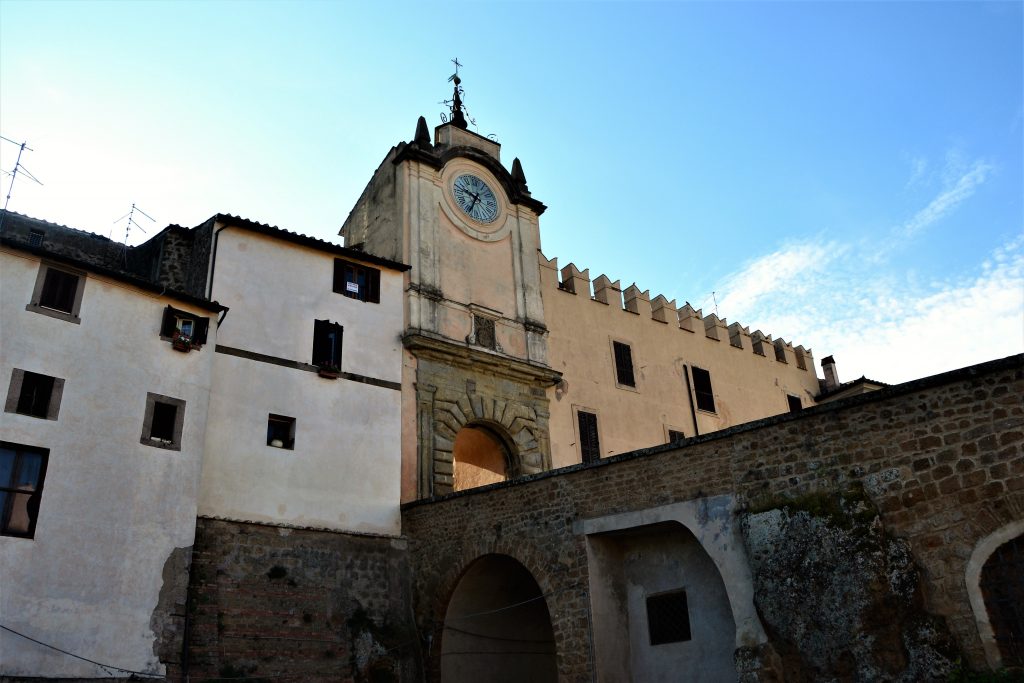
The feast of San Terenziano with Foconi is one of the most evocative of the whole of Tuscia. The procession goes from the centre of the village to the church dedicated to the saint along a stretch of countryside in the dark lit by large fires made with branches of broom that are called Foconi.
Another highly attended religious ceremony is that of the Madonna delle Grazie, in the month of May. The statue is one of the few really 'dressed', that is, wearing real precious garments, and is carried in procession on a complex and artistic machine.
Sutri
Indescribable Sutri! The ancient city is within an archaeological park of about 7 hectares. Here there is an Etruscan necropolis but also a Roman part with a splendid amphitheatre built around the 2nd century BC.
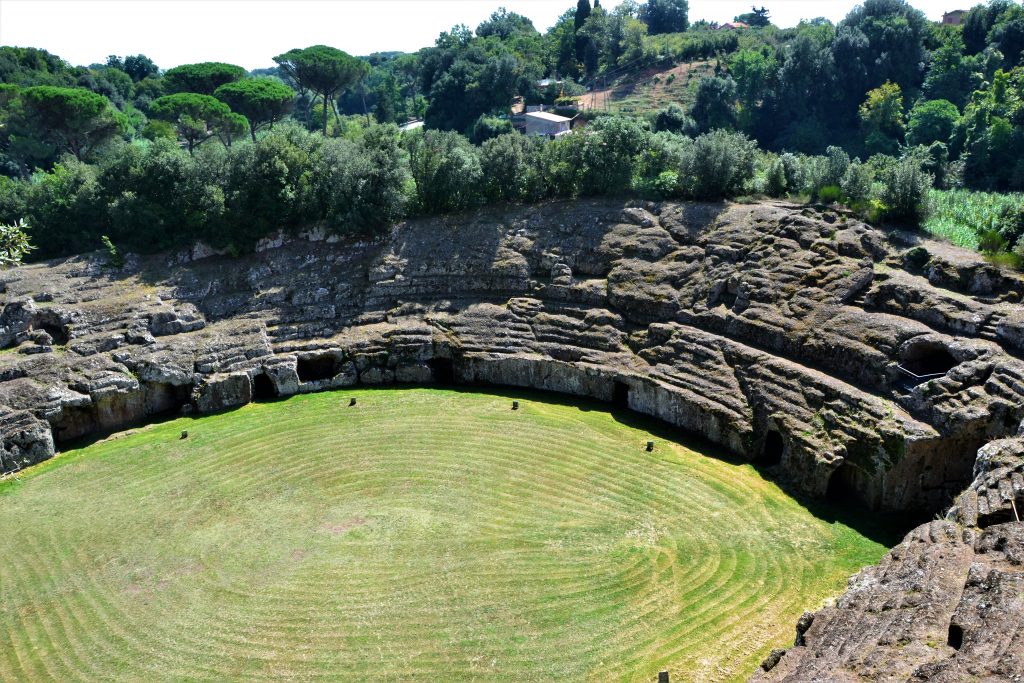
A real sense of magic: from the amphitheatre you cross a sacred wood to get to the top of the hill where there is a splendid Renaissance villa (now the park's headquarters) with an Italian garden that is a real gem. You then descend to the valley passing in front of a Mitreo, a frescoed cave that leaves strong emotions.
From ancient Sutri you can see the opposite hill with the new (medieval) Sutri where the view is dominated by the cathedral with a tall bell tower.
Crossing the town, you are struck by a thousand small details and the look wanders from one point to another. Be careful because the city loves the good life and you will always find some activity or party going on.
Monterosi
The last town of Tuscia is the one that is most affected by its proximity to Rome. In recent years it has increasingly become a place chosen by Romans who love the countryside and want to live part time outside the city centre.
Monterosi has one of the most beautiful golf courses near Rome and welcomes you with a belvedere where your gaze reaches the final destination of the journey.

St Peter's tomb is near ... and maybe I'm sorry to leave Tuscia a little but once you've found it you cannot help but come back. By the way, do not miss the ‘gold’ of Tuscia: its hospitality and a kitchen not to be forgotten easily!








Follow us